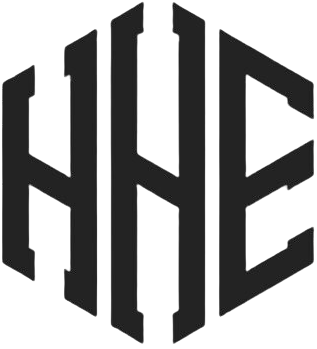Ethical Hacking Course. Aspiring security professionals often ask: what do you learn in an ethical hacking course? A well‑designed program teaches theory, tools, and hands‑on skills. You gain knowledge in network reconnaissance, vulnerability analysis, exploitation, and reporting. This article breaks down a typical ethical hacking course curriculum. We clarify each module, toolset, lab exercise, and certification path.
Smooth transitions guide you through the curriculum step‑by‑step. Read on to set clear expectations and plan your learning journey.
Core Modules in an Ethical Hacking Course
A standard ethical hacking course curriculum covers five core modules. Each module builds on the last. Understanding all five gives you a full pentesting roadmap.
Reconnaissance
Reconnaissance forms the first phase of any ethical hacking course. You learn open‑source intelligence (OSINT) and footprinting. Key topics include:
-
Domain and IP lookup
-
Network mapping techniques
-
Social media profiling
-
WHOIS and DNS enumeration
By the end, you know how to gather target data without alerting defenders.
Top 5 Books Every Aspiring Ethical Hacker Should Read
Scanning and Enumeration
Scanning and enumeration teach you to probe live systems. You learn tools like Nmap, Nessus, and OpenVAS. Topics include:
-
Port scanning and service detection
-
Banner grabbing
-
Vulnerability scanning basics
-
Identifying live hosts
These skills reveal potential attack vectors.

Online Security Technology and Hacking Risk Alert Concept
Vulnerability Analysis
Vulnerability analysis focuses on finding and prioritizing flaws. You learn to use:
-
CVE databases and security advisories
-
Automated scanners vs. manual review
-
Risk assessment methodologies
-
Reporting frameworks like CVSS
This module teaches you to separate false positives from real threats.
Exploitation Techniques
In exploitation, you apply your findings to gain access. You learn buffer overflows, SQL injection, and cross‑site scripting (XSS). Key lessons include:
-
Crafting payloads in Python or C
-
Metasploit Framework basics
-
Manual exploit development
-
Handling shellcode safely
This module sharpens your offensive security skills.
Post‑Exploitation and Reporting
After a successful exploit, you learn to maintain access and gather evidence. You cover:
-
Privilege escalation
-
Data exfiltration methods
-
Clearing logs and traces
-
Writing professional pentest reports
Strong reporting skills help you deliver clear, actionable findings.
Tools and Techniques Taught in an Ethical Hacking Course
Every ethical hacking course curriculum emphasizes real‑world tools. You gain hands‑on experience with industry standards.
Network Tools
Network modules often include:
-
Nmap for port scanning
-
Wireshark for packet analysis
-
Netcat for banner grabbing
-
Tcpdump for traffic capture
These tools form the backbone of network reconnaissance and analysis.
Web Application Tools
Web hacking lessons cover:
-
Burp Suite for proxy interference
-
OWASP ZAP for automated scans
-
SQLMap for database testing
-
DirBuster for URL fuzzing
Mastering these tools lets you find and exploit application flaws.
Certifications and Standards Addressed in an Ethical Hacking Course
A robust ethical hacking course curriculum aligns with industry certifications. You learn objectives from:
-
EC‑Council’s CEH (Certified Ethical Hacker) – covers 20 domains of hacking theory and practice
- CompTIA PenTest+ – emphasizes hands‑on pen‑testing skills.
- Offensive Security’s OSCP – focuses on full exploitation and reporting
Understanding these standards helps you choose the right certification path.
Practical Labs and Hands‑On Exercises in an Ethical Hacking Course
Theory alone won’t make you a skilled hacker. A quality ethical hacking course curriculum includes labs.
Virtual Labs
Most courses provide simulated environments. You practice on:
-
Kali Linux – preloaded pentesting distribution
-
Metasploitable – vulnerable virtual machine for exploit testing
-
DVWA – deliberately vulnerable web app
These labs let you apply new skills safely.
Capture‑the‑Flag Challenges
CTF challenges reinforce your learning. They include:
-
Jeopardy‑style tasks on cryptography and reversing
-
Attack‑defend rounds in team competitions
-
Real‑world scenarios that mimic corporate networks
Such challenges boost problem‑solving and teamwork.
Choosing the Right Ethical Hacking Course
With many options, picking the best ethical hacking course can feel hard. Focus on these criteria:
Accreditation in an Ethical Hacking Course
Ensure your provider offers recognized accreditation. Accredited courses often tie directly to certifications like CEH or OSCP.
Instructor Expertise
Vet instructor backgrounds. Look for professionals with real pentesting and security consulting experience.
Curriculum Depth
Compare outlines. A strong curriculum covers all modules we detailed above.
For a broader pentesting workflow, you can also read our Ultimate Guide to Ethical Hacking.
Smooth Transitions and Study Tips
Moving from one topic to another feels seamless when you:
-
Review past modules before advancing
-
Practice daily in your virtual lab
-
Join security communities for shared learning
-
Keep a pentest journal to track progress
These habits ensure you retain core concepts and tools.
Conclusion
An ethical hacking course curriculum breaks down into modules, tools, labs, and certifications. You learn reconnaissance, scanning, analysis, exploitation, and reporting. You master network and web tools. You practice in virtual labs and CTFs. You align your skills with CEH, PenTest+, or OSCP standards. Use our breakdown to set learning goals. Choose accredited courses with expert instructors. Combine study tips with hands‑on practice. By following this roadmap, you’ll gain the skills you need to excel as an ethical hacker.
Start your learning journey today and transform your cybersecurity career.



No responses yet